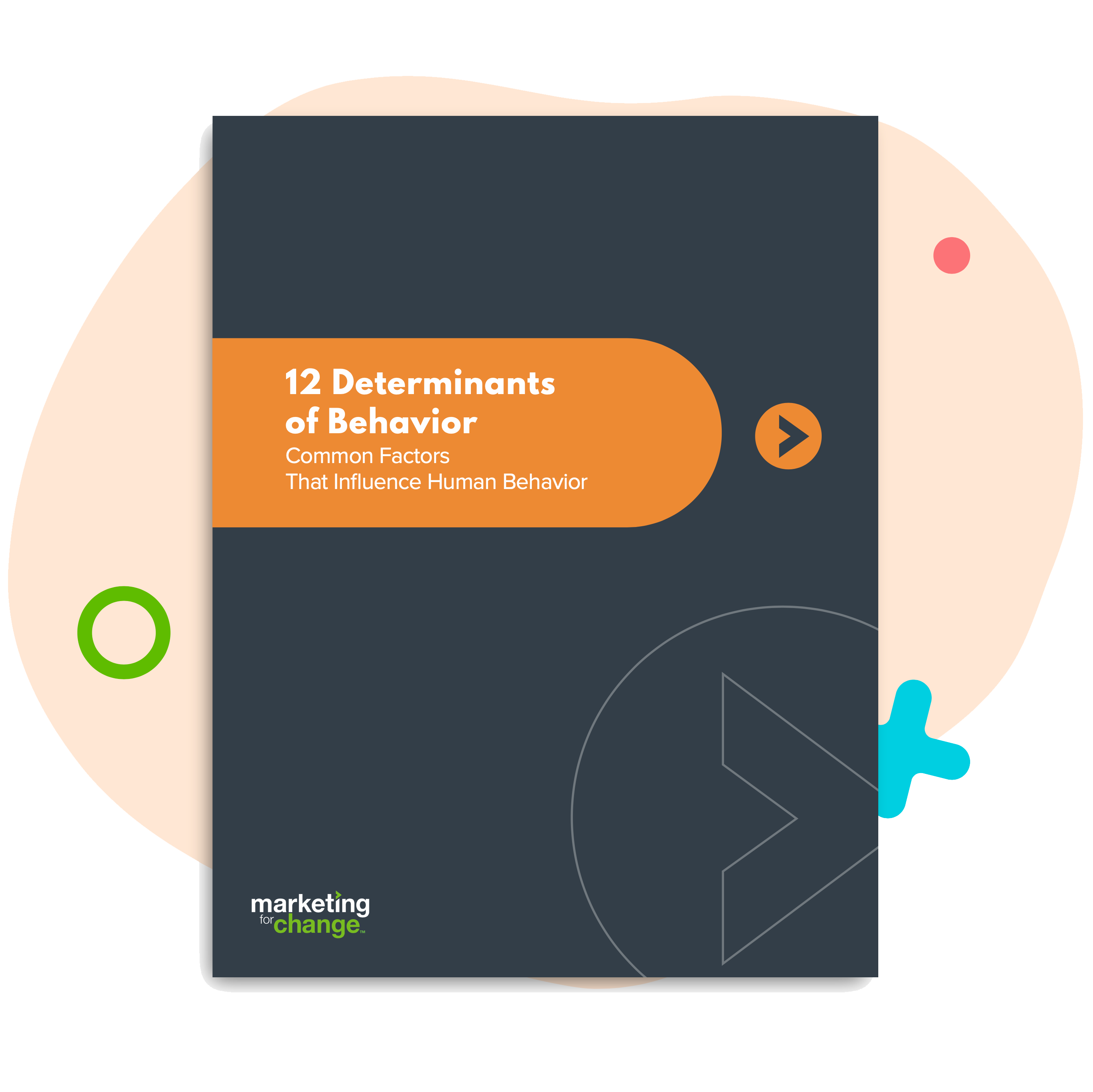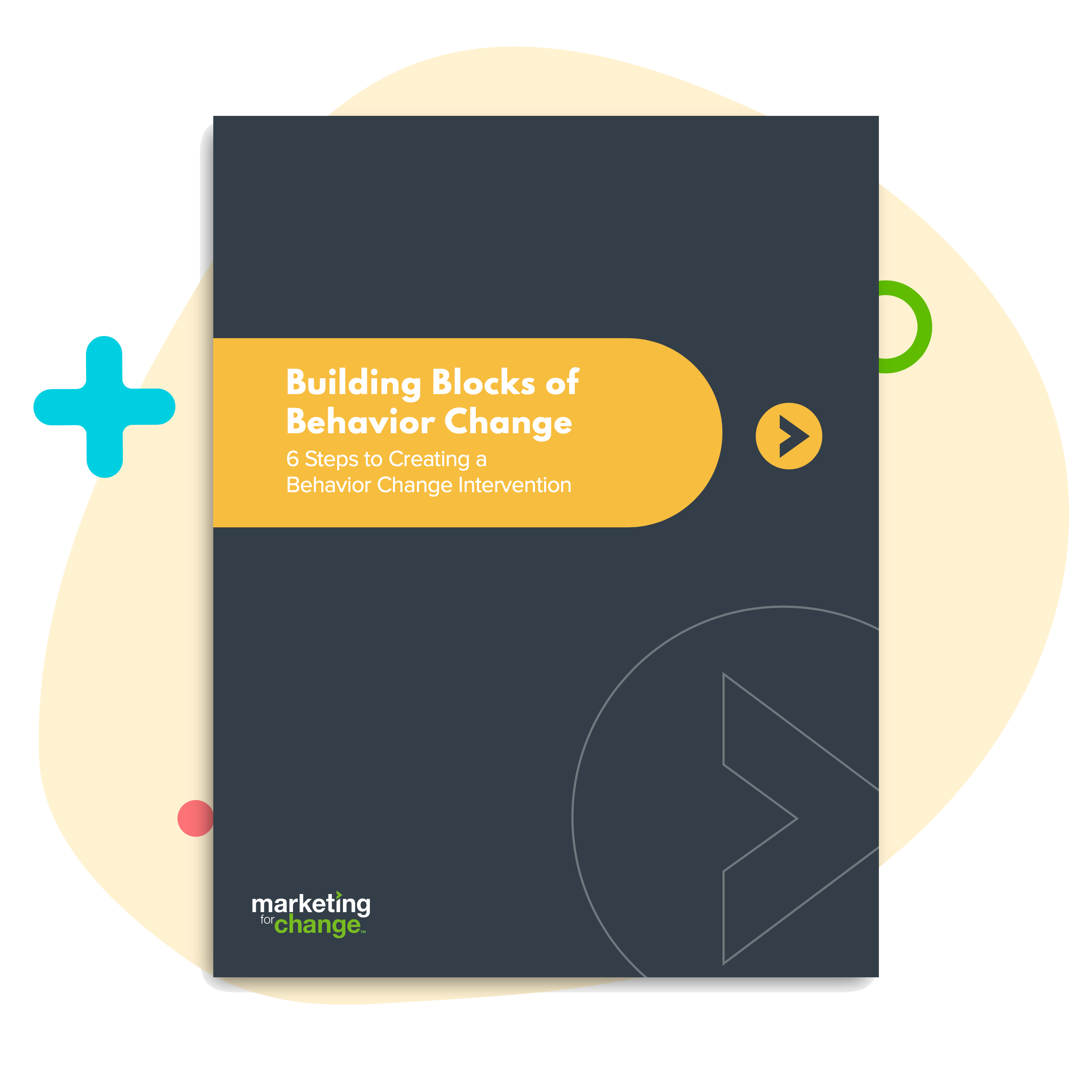
5 Key Behavioral Insights for 988 Mental Health Outreach
For the past several years, Marketing for Change has been working with a behavioral health authority in Central Maryland to develop a research-informed outreach campaign to encourage local use of the new 988 suicide prevention crisis line.
One surprising finding from our work: putting suicide and crisis front and center in outreach messaging can make it hard for everyone, including those most at risk, to call.
Thinking it through, it makes sense. Stigma is still a huge barrier to mental health help-seeking and stigma increases with the severity of the condition.
This can make it hard for people to call a “crisis” helpline even when they need one. It can also prevent people from reaching out before they hit a tipping point, because it can feel like their problems aren’t big enough to merit the call line’s support.
So what does work? In our work with Behavioral Health Systems Baltimore and now across three other states, Marketing for Change used our Behavioral Determinants Framework to uncover five key insights that can increase local trust and engagement with 988’s mental health services.
We surveyed or interviewed thousands of people from highly diverse backgrounds, including a wide variety of ages (from 13 to 89), genders, socioeconomic backgrounds, and racial or ethnic identities. Fifty-eight percent reported lived experience with mental health concerns or suicidality.
We summarize our findings below. (For a more thorough detailed overview, see the white paper we published last month.)
5 Key Behavioral Insights for 988 Mental Health Outreach
Normalize help-seeking to reduce stigma
Behavioral determinant: Social norms
Humans are funny creatures. One of the things we do really well is justify beliefs we already hold. So most people will tell you “mental health stigma is bad.” But then they can turn right around – even those with lived experience themselves – and “explain” how their stigmatizing beliefs (quantified on a survey) are NOT stigma but a truth based on experience. (We conducted research some years back that demonstrated this).
This is why “stop stigma’ campaigns don’t work. So what does?
- Using concrete, everyday language about more common mental health concerns such as “anxiety,” “feeling down,” or “grieving.” This feels more personally relevant than “mental health.”
- Offering “emotional support,” which feels more ordinary and is less stigmatized than “mental health support.”
- Saying “experiencing” instead of “struggling.” Men and women reacted negatively to the use of struggling in communications: “You’re telling me I am weak.”
“I think ‘struggling with mental health’ is kind of a negative statement. To me, if you’re telling a person ‘you’re struggling,’ it means that they’re weak and they don’t know how to address problems correctly.”
— Adult male
Lower the stakes of engagement
Behavioral determinant: Self-perception theory (“foot in the door”)
The purpose of the 988 helpline is to reach people in crisis to prevent suicide. However, participants told us that a crisis felt overwhelming and chaotic — “like a zombie attack or 9/11” — while an emergency was something an ordinary person could address.
Messaging that focused more generally on help-seeking increased willingness to engage with 988, especially for young people with lived experience with suicidal thoughts and actions.
What works
- Using “emergency” instead of “crisis.” Respondents also responded more positively to “helpline” instead of crisis line or lifeline.
- Making suicide one of many reasons to contact 988. For most call centers, simply getting people to use 988 is their biggest problem. However, before widening your outreach, be sure to monitor response times to ensure all calls can be answered quickly.
- Creating lower-stakes opportunities for engagement, such as campaign website landing pages with tips for coping with common emotional concerns.
“An emergency, it’s a sense of, like, we need to act now. Crisis, there’s like that pandemonium. It’s overwhelming.”
— Adult female, Baltimore County
Focus on what people want to feel right now
Behavioral determinant: Hyperbolic discounting
Behavioral economics experiments show that people are more motivated by smaller but more immediate rewards than they are by bigger rewards that come later (a bias known as hyperbolic discounting).
Although crisis support and suicide prevention are the core mission of 988, many callers need more specific and immediate benefits to make it worthwhile to pick up the phone.
What works
- Focusing on what people want to feel rather than what you think they need to know. Behavioral science shows us that emotion, not logic, drives most human decisions.
- Offering relief, connection, and hope without overpromising. These three benefits were most motivating. But people also know it will take more than a single conversation to resolve their concerns.
- Using hopeful imagery and colors. Testing showed that despairing pictures and subdued colors sparked the “ostrich effect ”— a human tendency to ignore problems that we don’t want to deal with. Note, however, that overly happy images can seem like they are overpromising or unrealistic.
“I’ve seen friends who have dealt with substance abuse, and it’s a long struggle. And it’s very frustrating at times. So hope is important in this situation. Absolutely.”
— Adult male
Help people know what to expect if they call
Behavioral determinant: Uncertainty effect
Humans hate uncertainty. Across all audience segments, a key barrier to calling was simply not knowing what to expect. Most people do not have a mental model for what a call experience might be like, so they worry about unknowns and unintended consequences.
What works
- Helping people understand what the call experience will be like. Create easy-to-follow graphics or use video of call center operators to explain the call process.
- Highlighting confidentiality. A major barrier to calling is the fear that conversations with 988 will somehow be shared with others. Let people know calls will be kept private.
- Maintaining transparency while allaying fears. For example, in Baltimore, where distrust of law enforcement is high, it was helpful to highlight that law enforcement is brought in only 1% of the time — and only if someone’s life is in immediate danger.
“I’d be scared to call, I’d be scared to know like what’s going to happen when I end this call. If it’s like something like suicidal, if I have to go to the hospital, if my family found out … if I had to leave my sport.”
— High School student
Lead with 988 but consider localizing your brand
Behavioral determinant: Messenger effect
People are more likely to believe information communicated by someone they trust — and the opposite is also true. The quality of the information matters far less than people’s feelings about the messenger.
A key barrier to 988 engagement, especially among marginalized communities, is widespread distrust of “the system.” Our research found that rooting 988 brands in the community can help build trust and engagement. For example, Central Maryland participants responded positively to the CALL 988 logo’s purple color because it reminded them of the Baltimore Ravens.
What works
- Leading with 988 in your campaign brand and messaging to build awareness for the helpline and recall of the number, but including local elements.
- Referencing cultural touchstones in your messaging such as iconic phrases, events, or images that build on a shared social identity. A custom photoshoot can help gather images that reflect your community.
- Conducting brand testing. Whether you develop your own 988 brand or use the new national 988 Crisis & Suicide Lifeline name and logo, consider testing with local residents to chose an option that most builds trust.
“Stock images are cheesy. [The campaign] should be inclusive to make people feel seen and heard.”
— Young Adult

Sara Isaac is Chief Strategist at Marketing for Change.







